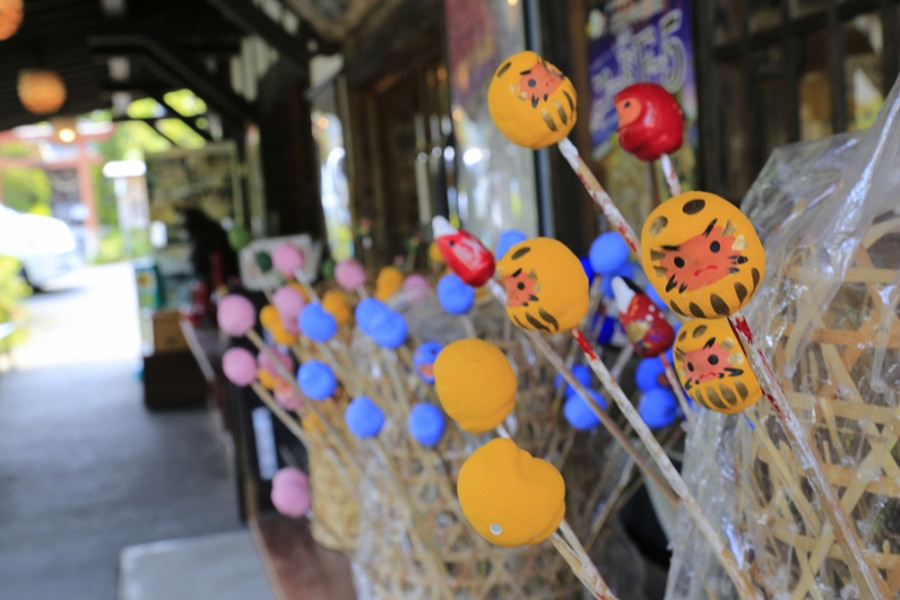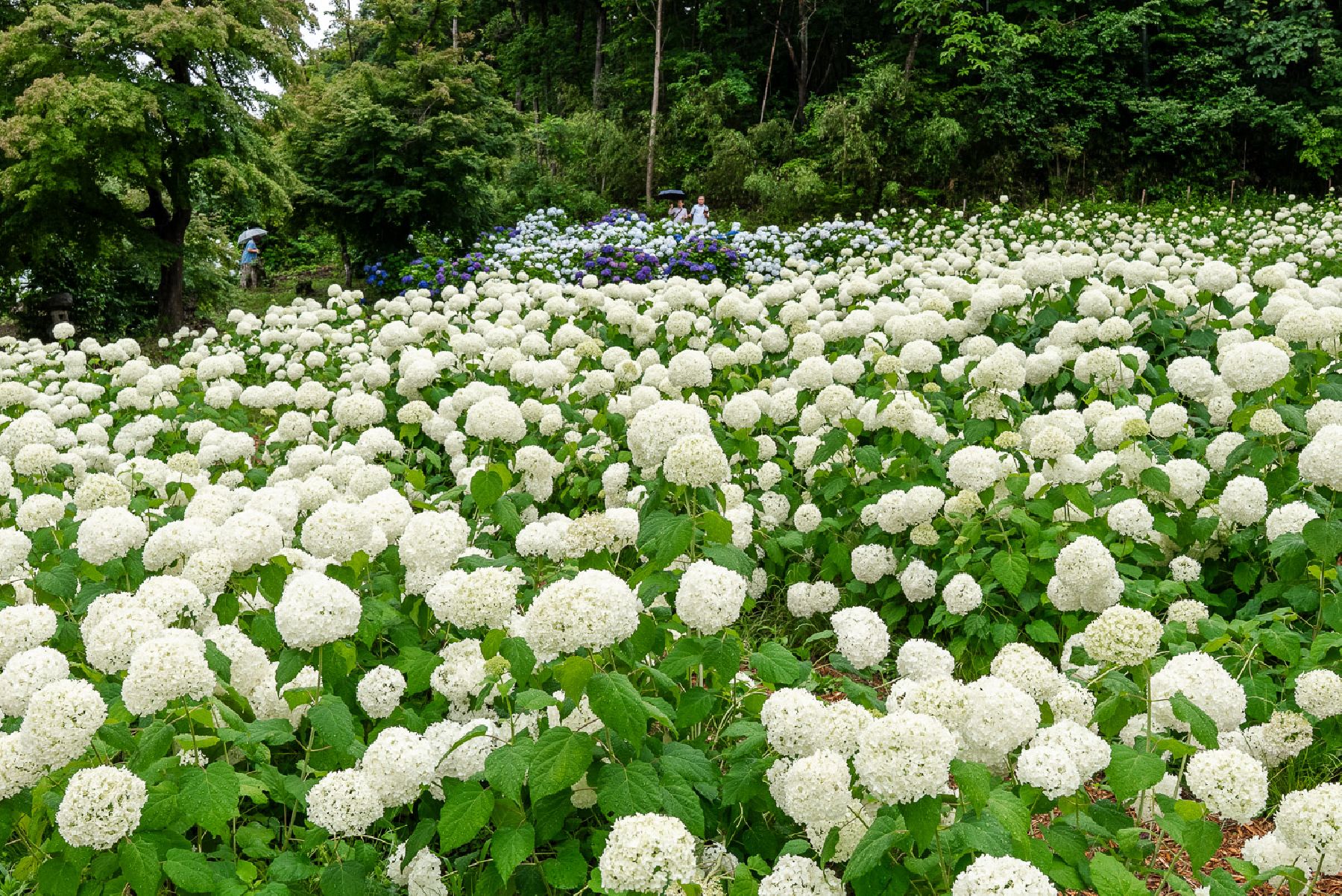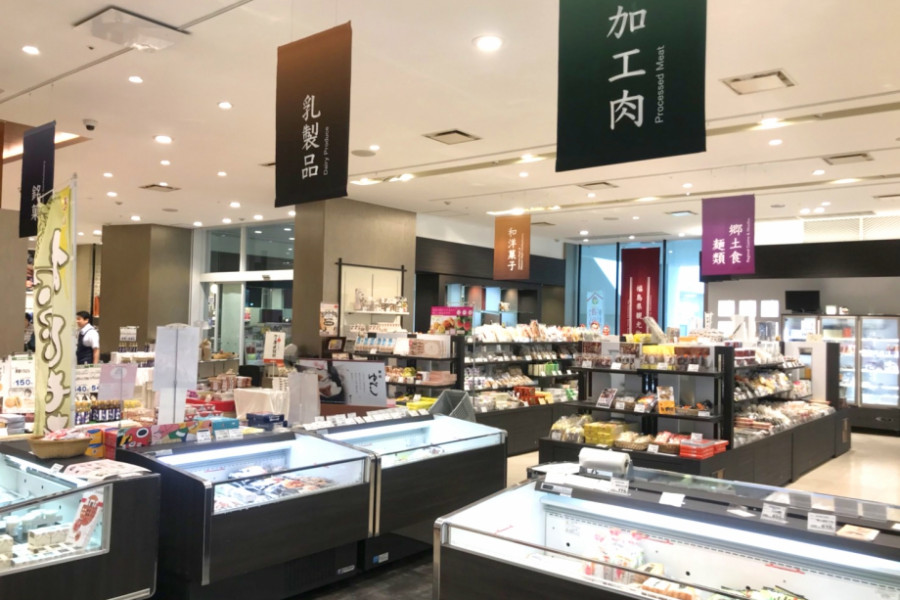
Noji Onsen
Noji Onsen is a beautifully scenic onsen resort in Adatara mountains. It is especially breathtaking when the outdoor baths, and their cloudy white waters, are surrounded by stunning snowy landscapes in winter.

A traditional craftsmen's village bestowing an air of the olde-worlde. The papier-mâché crafts of the town, made lovingly by hand for generations, will bring a smile to your face.
Takashiba Dekoyashiki is an historical craftsmen's village, and was at one time under the protection of the Miharu feudal domain. Dating back 300 years to the Edo Period, this community is said to have been born when a traveller from Kyoto taught the people how to craft papier-mâché dolls using a special paint called 'nikawa'. Take a walk through the nikawa-scented streets of Takashiba Dekoyashiki and step into the Japan of old. Visitors can try their hand at painting various traditional crafts, including the Miharu-koma horse wooden doll.
| Website | https://www.kanko-koriyama.gr.jp/tourism/detail3-0-66.html(Automated translation available) |
|---|---|
| Contact | Koriyama City Tourism Association (+81) 24-924-2621 info@kanko-koriyama.gr.jp |
| Best Season | All Year |
| Parking | Available (Approx. 100 cars) |
| Entrance Fee | Entrance is free. There are charges for the various painting experiences. |
| Access | Nishita-machi, Takashiba District, Koriyama City, Fukushima Pref. 963-0902 View directions |
|---|---|
| Getting there | By Car: 10 min from Koriyama-Higashi I.C. exit off the Ban-etsu Expressway By Train: 10 min taxi ride from Miharu Station on the JR Ban-etsu East Line |

Noji Onsen is a beautifully scenic onsen resort in Adatara mountains. It is especially breathtaking when the outdoor baths, and their cloudy white waters, are surrounded by stunning snowy landscapes in winter.

Nihonmatsu Castle was built in 1643 by Mitsushige Niwa, the first feudal lord of the Nihonmatsu Domain. This domain had command over a territory producing 100,000 koku of rice (one koku being the amount of rice needed to feed one man for a year) and Nihonmatsu Castle was one of the strategic points used by the Tokugawa Shogunate forces. The castle fell in Boshin War after a fierce battle, precipitating the tragedy of the Nihonmatsu Youth Corps.Today, the castle ruins have been turned into a prefectural natural park, with the stone walls being the only structures remaining from the old days. The seasonal beauty of the landscape with the restored castle and the surrounding natural environment is a soothing experience for visitors, particularly in the spring when the 1,700 cherry trees in the park are in full bloom, making it seem as if the castle is surrounded by haze of blossoms. This is why Nihonmatsu Castle is also referred to as "Kasumigajo" (meaning "castle in the mist").In autumn, the park is crowded with visitors to Japan's largest chrysanthemum doll festival.

Designated a historic site by Fukushima City, Yorinji Temple is famous not only as a cherry blossom spot but for its abundance of flowers. It’s said there are over 20,000 anabells and 5,000 hydrangeas, making it a popular place to visit during its blooming season (typically mid-June to early July).The purification well here is full of beautiful flowers from the area and watched over by small o-jizo-san - stone statues of a Buddhist deity said to protect children. Larger statues also dot the grounds of the temple, wearing traditional red caps and bibs; these are usually gifts offered by locals as a way of showing respect.There is a cafe on the grounds which sells gluten-free pizza made on site.A trip to the south of Fukushima City pairs well with seeing the Tired Gundam, a short five minute drive away.

The Fukushima Product Promotion Center (also known as the ‘Bussankan’) is a short walk from the west exit of Fukushima Station and is the best spot to buy unique souvenirs from your trip to Fukushima.Enjoy a delicious lunch, and even do a sake tasting, at the Fukushima Lounge. All food and sake has been grown and produced locally in Fukushima.Browse locally-made items – which have been designed over generations in response to Fukushima’s rich history and culture, and have become representative of various areas of Fukushima Prefecture – displayed and sold in the ‘Local Products’ section.Great food, dried goods, local products and traditional crafts – the best from all over the prefecture can all be found at Fukushima Prefecture Souvenir Shop.As well as displaying and selling delicious local produce and locally-made folk crafts from a wide range of areas across the prefecture, the Fukushima Product Promotion Center also provides information on local products and sightseeing opportunities in Fukushima. Local artisans, farmers and performers also regularly visit the shop to display and sell their work.

Licca Castle houses a production studio and museum both dedicated to Licca dolls (Japanese fashion dolls). In this building designed in the image of a European castle, you can find out everything there is to know about the five generations of Licca dolls.

Yamamoto Fudoson Temple was built over 1000 years ago in a rocky cavern. The temple can be reached by taking paths lined with century-old Japanese cedar trees, and climbing a 130-step stone staircase. The cave that makes up part of the Yamamoto Fudoson temple grounds is where the Buddhist deity enshrined at this temple is worshipped. Yamamoto Fudoson Temple is located in Yamamoto Park. This park is centered in a valley – 5 km of which is designated as an Okukuji Prefectural Natural Park. A wonderful place for flower-viewing throughout the year, this area is also great for experiencing beautiful autumn leaves.

Shirakawa Castle (Komine Castle) was heavily damaged during the Boshin War (also known as the Meiji Restoration), and was restored in the 1990s.Komine Castle's restoration marked the first time in over 120 years that a restoration had been attempted on a triple turret (yagura) structure. Blueprints from the late Edo Period were used as references for the repair of this structure.As a result of using these blueprints, it was possible to restore the castle almost exclusively using wood construction techniques. This amazing architecture, along with the extraordinary techniques used to make the stone wall around the castle, make this castle extremely special. There is also an exhibition hall on site.

Nihonmatsu Castle was built in 1643 by Mitsushige Niwa, the first feudal lord of the Nihonmatsu Domain. This domain had command over a territory producing 100,000 koku of rice (one koku being the amount of rice needed to feed one man for a year) and Nihonmatsu Castle was one of the strategic points used by the Tokugawa Shogunate forces. The castle fell in Boshin War after a fierce battle, precipitating the tragedy of the Nihonmatsu Youth Corps.Today, the castle ruins have been turned into a prefectural natural park, with the stone walls being the only structures remaining from the old days. The seasonal beauty of the landscape with the restored castle and the surrounding natural environment is a soothing experience for visitors, particularly in the spring when the 1,700 cherry trees in the park are in full bloom, making it seem as if the castle is surrounded by haze of blossoms. This is why Nihonmatsu Castle is also referred to as "Kasumigajo" (meaning "castle in the mist").In autumn, the park is crowded with visitors to Japan's largest chrysanthemum doll festival.